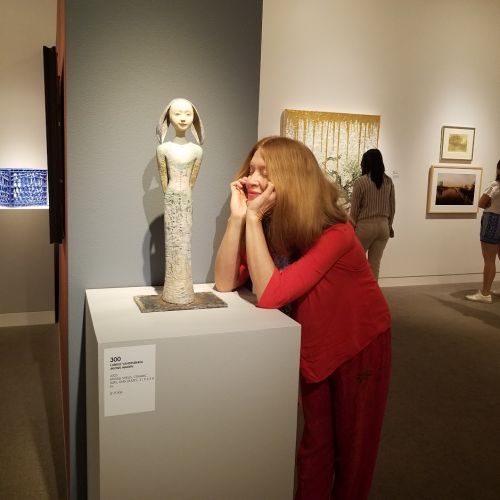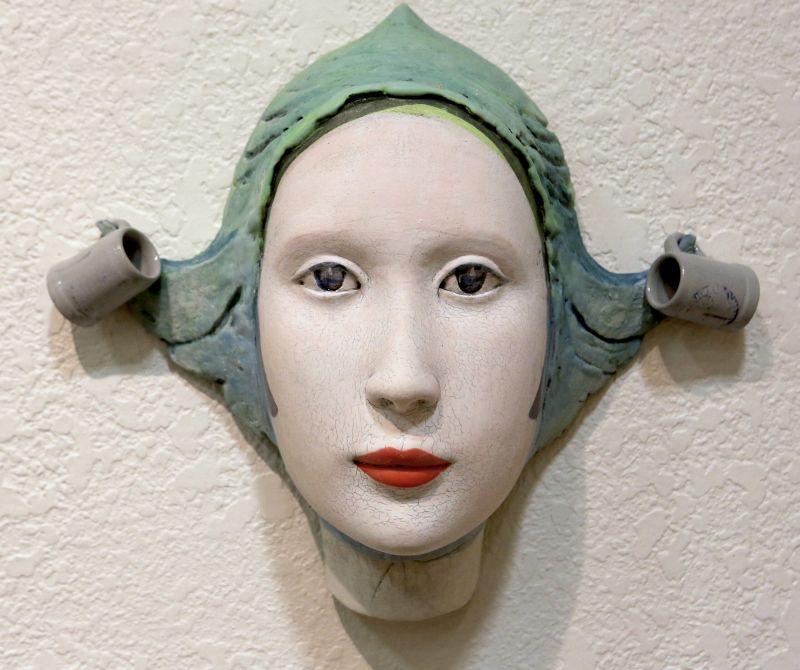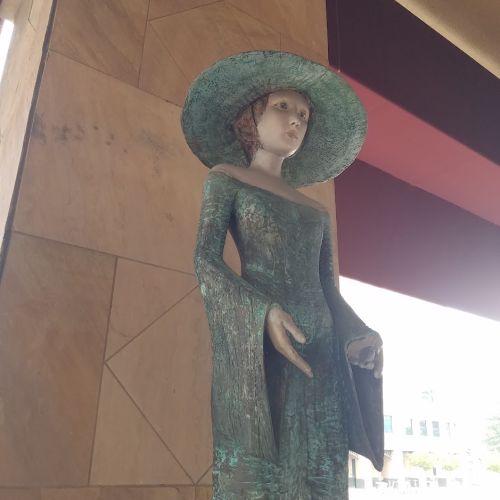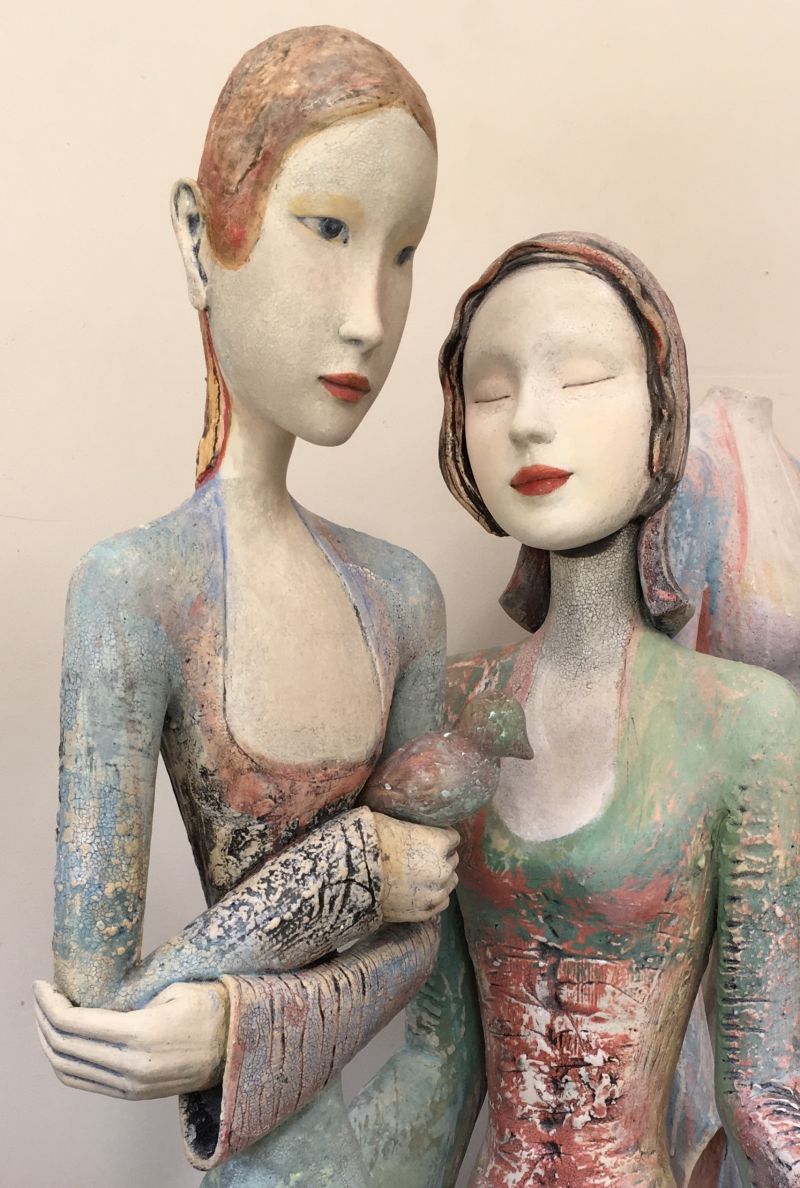
Camille Vandenberge

Camille VandenBerge’s work is characterized by paradoxically strong and delicate distortions of the human and animal forms. Her work articulates a peaceful interiority that both reflect her own developing spirituality and, at its best, communicates with an observer’s sense of the same spiritual truth.
Daughter of two talented artists, Marilyn, a painter and Peter VandenBerge, an established sculptor, Camille remembers living in a house “overflowing with art,” everything from Tamayo to Thiebaud to Robert Arneson. Her aesthetic sensibility and her eye for form and color manifested at a very young age. She describes her youth as dressing up in costume and performing, habits that led to her continuing interest both in visual and dramatic arts receiving a B.F.A. at the University of California, Davis.
Encounters with nature have always been a dominant subject in VandenBerge’s work; her experiences in the Dutch woods, combined with her interest in northern European folklore Influence the arboreal forms of her figures, many of which she describes as “dryad, nymphs and woodland spirits.” In her female figures, she attempts to transfigure the numerous vitalities of nature that she associates with the fertile power of women. The new works are influenced by China’s dynastic figurative sculpture; the delicate, beautifully evocative women in period costume have a strong resonance with her own quasi-mythical female figures. Her work demonstrates her strong feelings for the Asian aesthetic with a number of childlike animals such as horses, rabbits and creatures, which she would prefer to describe as Toy Horse, BuddaFly or Aminal-in-Me. Her strong linear and textured women, some as tall as seven feet, evoke an instant visceral sensation of elegance, gracefulness and balance. Her interest in the female form is part of a deeply held sense of identity and a reverence for the situation of women around the world.
VandenBerge’s surfaces are roughly textured and deeply scored with primitive, childlike carvings. Using glaze-stains on a surface of fired slips gives her sculptures the appearance of existing somewhere between the human and the vegetable. VandenBerge employs colors found primarily in nature, including earthy browns, the pastel blues and reds of berries and the loamy dun of decaying leaves and pods.








